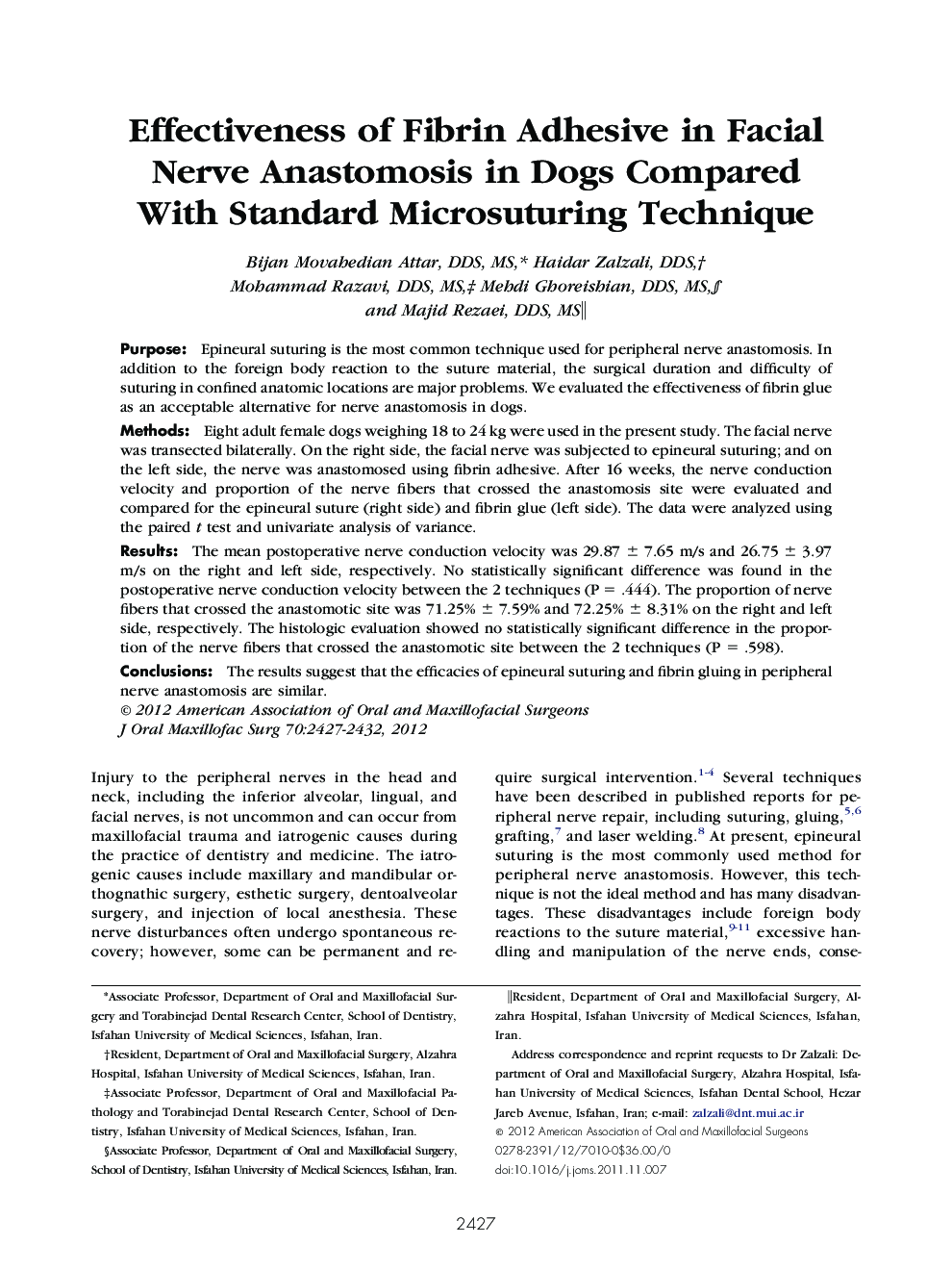| Article ID | Journal | Published Year | Pages | File Type |
|---|---|---|---|---|
| 3156656 | Journal of Oral and Maxillofacial Surgery | 2012 | 6 Pages |
PurposeEpineural suturing is the most common technique used for peripheral nerve anastomosis. In addition to the foreign body reaction to the suture material, the surgical duration and difficulty of suturing in confined anatomic locations are major problems. We evaluated the effectiveness of fibrin glue as an acceptable alternative for nerve anastomosis in dogs.MethodsEight adult female dogs weighing 18 to 24 kg were used in the present study. The facial nerve was transected bilaterally. On the right side, the facial nerve was subjected to epineural suturing; and on the left side, the nerve was anastomosed using fibrin adhesive. After 16 weeks, the nerve conduction velocity and proportion of the nerve fibers that crossed the anastomosis site were evaluated and compared for the epineural suture (right side) and fibrin glue (left side). The data were analyzed using the paired t test and univariate analysis of variance.ResultsThe mean postoperative nerve conduction velocity was 29.87 ± 7.65 m/s and 26.75 ± 3.97 m/s on the right and left side, respectively. No statistically significant difference was found in the postoperative nerve conduction velocity between the 2 techniques (P = .444). The proportion of nerve fibers that crossed the anastomotic site was 71.25% ± 7.59% and 72.25% ± 8.31% on the right and left side, respectively. The histologic evaluation showed no statistically significant difference in the proportion of the nerve fibers that crossed the anastomotic site between the 2 techniques (P = .598).ConclusionsThe results suggest that the efficacies of epineural suturing and fibrin gluing in peripheral nerve anastomosis are similar.
